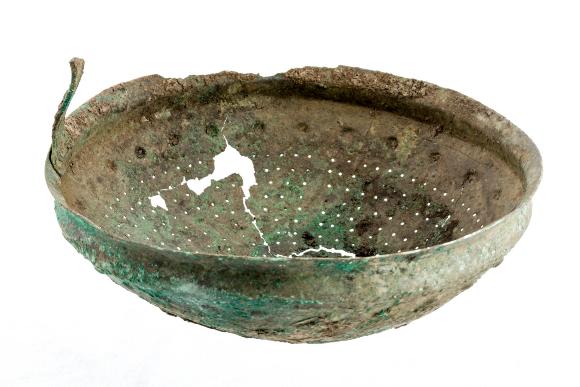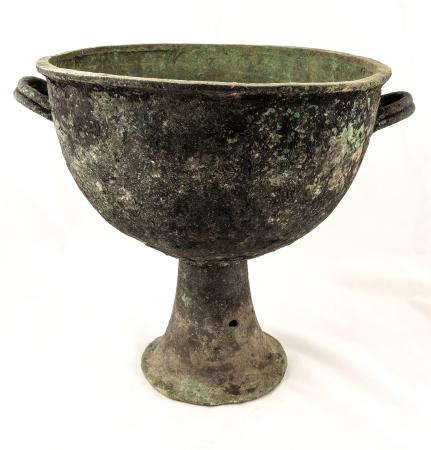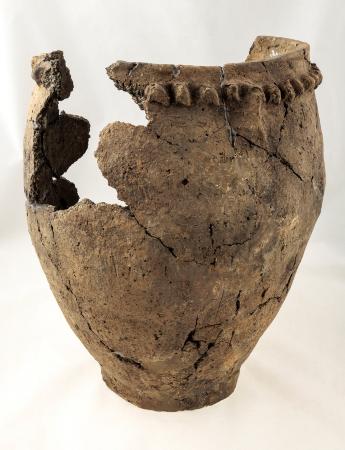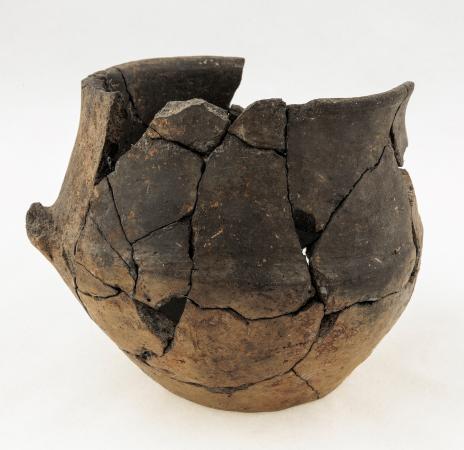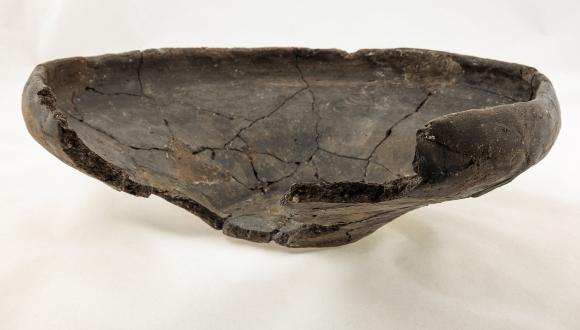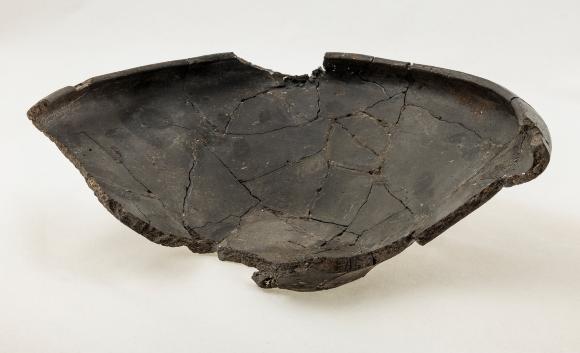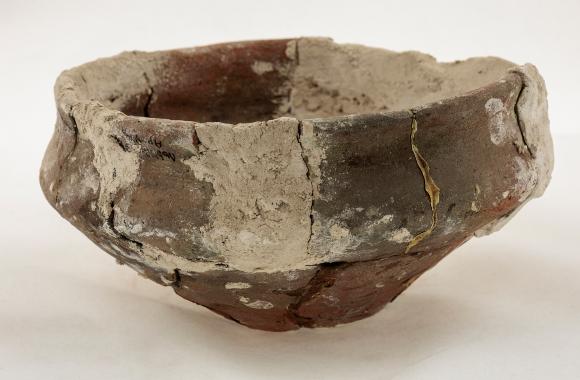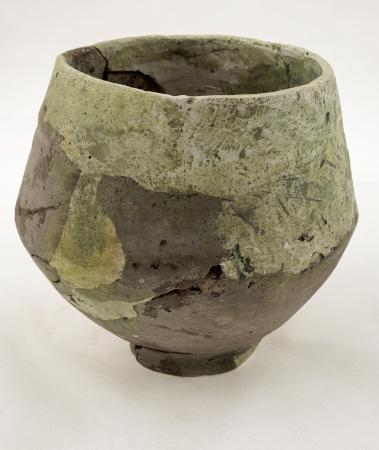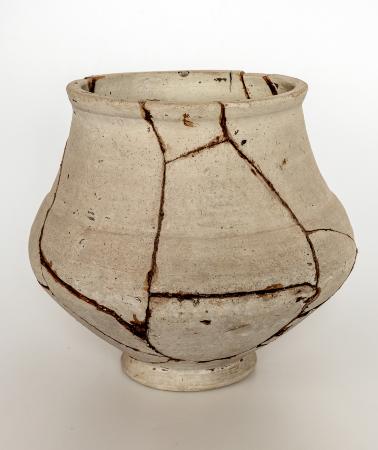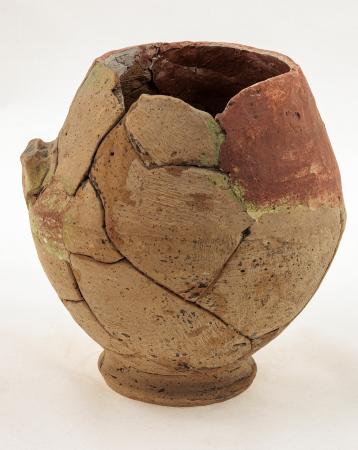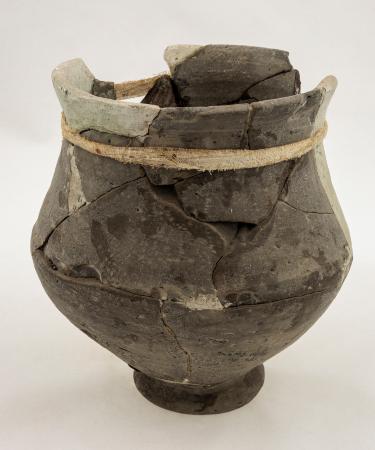Vessel with Snakes
- Inventory number:
- АР-148
- Creation Date:
- 4th - 3rd millennia BC
- Place of Creation:
- Koshylivtsi village, Ternopil region
- Provenance:
- Lviv Historical Museum
- Technique:
- molding
- Size:
- 20 x 18 cm
- Material:
- clay, paint
- Type of object:
- Vessel
- Subject:
- Cucuteni–Trypillia culture
The vessel is round in shape, painted white on the outside. It has two round handles and a narrow neck. At the top, near the neck, there are three black lines connected by red lines. The central part is painted white, featuring S-shaped snakes and vipers, along with red diagonal lines. The bottom of the design is outlined with a black line and a red stripe. Depictions of snakes and vipers on Cucuteni-Trypillian painted pottery are quite common. Some scholars interpret these as symbols of water and rain, which, along with the sun, were obviously essential for a good harvest for farmers. Others believe the snake symbolizes a benevolent serpent, a guardian of the household hearth. Archaeologist Vikentiy Khvoyka discovered the first Cucuteni-Trypillian settlement in present-day Ukraine in 1893–1894 on 55 Kyrylivska Street in Kyiv. However, the culture was named after the village of Trypillia of Kyiv Region. The area of its spread in Eastern Europe ranged from the Dnipro River to the Carpathians, from Polissia to the Black Sea and the Balkan Peninsula. The settlements of the Trypillians covered a significant area and are referred to as proto-cities. One of the distinguishing features of this culture was the burning of their homes, which could have been caused by soil depletion, a lack of resources for livestock grazing, or perhaps it had a ritual significance. The Trypillians were primarily engaged in cultivation, grain farming, fishing, pottery, weaving, metallurgy (including copper processing), and animal husbandry.




